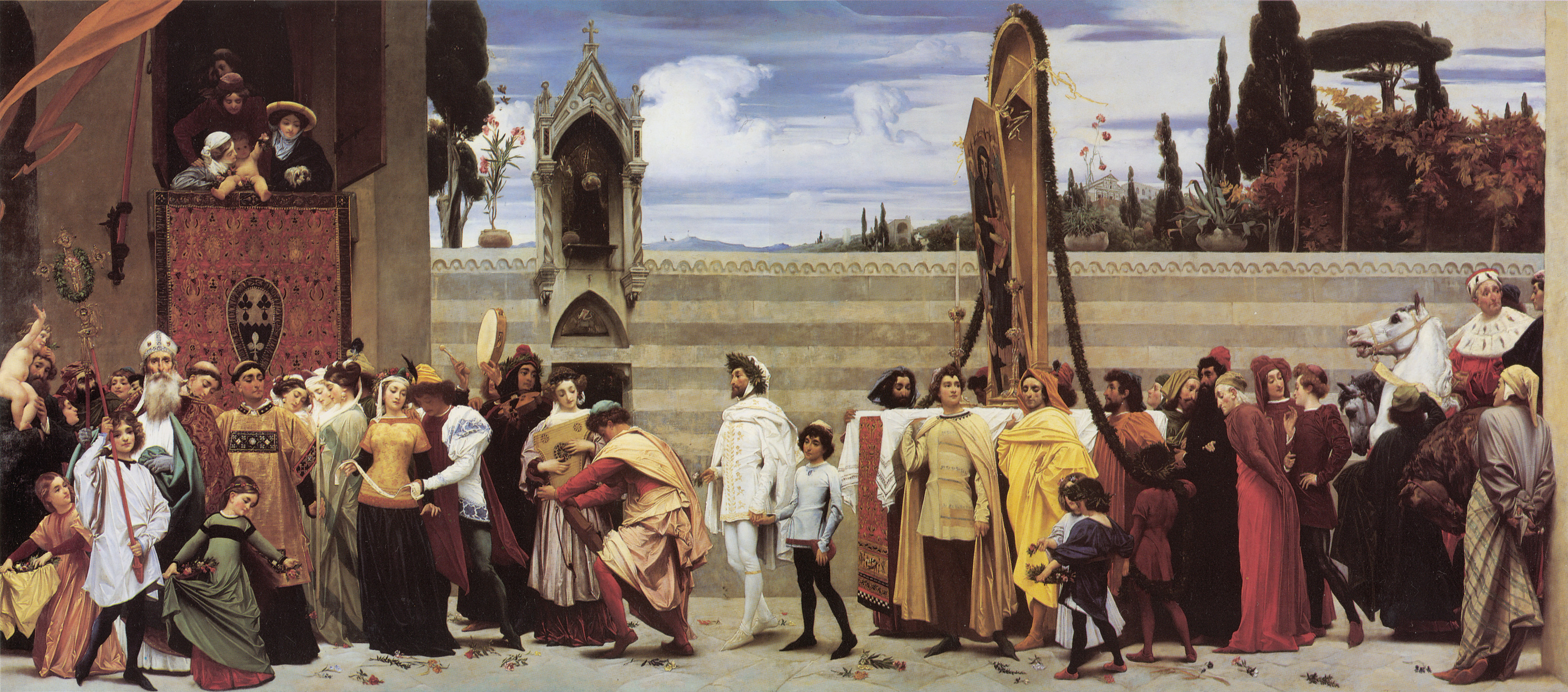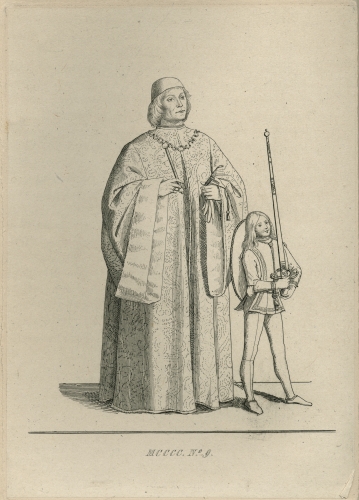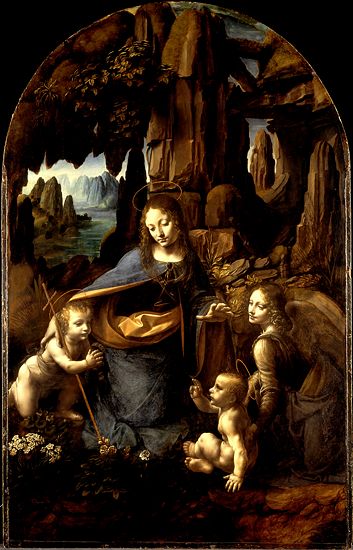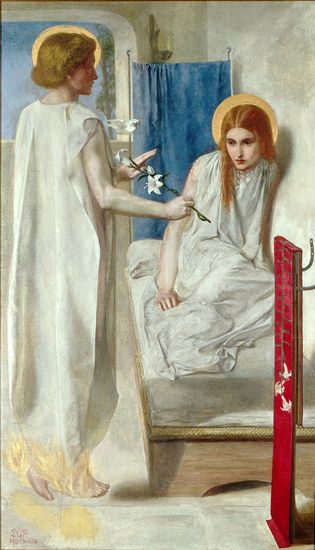Representing the Renaissance (Annotated Bibliography)
Dana Wheeles
University of Virginia
5

Cimabue's Celebrated Madonna Carried In Procession Through the Streets of Florence, 1853 - 1855
Currently on view at the Leighton House Museum
|
The Victorians were fascinated by the Italian Renaissance: its art, its culture and its personalities. This ongoing exhibit is meant to showcase valuable resources in NINES concerned with the Victorian historiography of the period. It will be updated as objects are added to NINES. |
Agincourt, J. -B.L. G. Seroux d'. Histoire de l'art par les monuments depuis sa decadence au IVeme siecle jusqu'a son renouvellement au XVIeme. Paris, 1823.
Appolinaire, Guillaume. La Rome des Borgia, Paris, Bibliotheque des curieux, 1913.
Barringer, Tim and Elizabeth Prettejohn (eds.). Frederic Leighton: Antiquity, Renaissance, Modernity. New Haven and London: Yale University Press, 1999.
Barolsky, Paul. "Pater's Noble Vision," The Journal of Pre-Raphaelite Studies III, no. 2 (May 1983): 9-18.
___. Walter Pater's Renaissance. University Park: Pennsylvania State University Press, 1987.
___. Walter Pater's Renaissance. University Park: Pennsylvania State University Press, 1987.
|
Bonnard, Camille. Costumes Historique des Quatorzieme et Quinziemes Siecles.
Complete with engravings by Paul Mercuri, this collection of images from various frescoes, altarpieces and paintings of the Quattrocento was an essential resources for history painters of the nineteenth century. For more on this book and its use in Rossetti's art, see Gail Weinberg's “Dante Gabriel Rossetti's ‘Salutation of Beatrice’ and Camille Bonnard's ‘Costumes Historiques’,” and Eriko Yamaguchi's "Rossetti's Use of Bonnard's Costumes Historiques". |
Browning, Robert. Men and Women. 1851.
As David deLaura has shown in his article on "The Context of Browning's Painter Poems," Browning's "Fra Filippo Lippi," "My Last Duchess" and "Pictor Ignotus" are firmly grounded in nineteenth-century perspectives on the Renaissance.
As David deLaura has shown in his article on "The Context of Browning's Painter Poems," Browning's "Fra Filippo Lippi," "My Last Duchess" and "Pictor Ignotus" are firmly grounded in nineteenth-century perspectives on the Renaissance.
Burckhardt, Jacob. The civilization of the renaissance in Italy. 1860; Translated from the German by S.G.C. Middlemore. Harper, 1878.
Burckhardt's foundational study of Alberti and the Renaissance spirit of independence was not translated into English until the 1870s, and was therefore limited in distribution early in the century. It has since become a valuable resource - if not for its pedagogical usefulness in the 21st century classroom, then certainly for the insights it provides into nineteenth-century attitudes toward the past.
Burckhardt's foundational study of Alberti and the Renaissance spirit of independence was not translated into English until the 1870s, and was therefore limited in distribution early in the century. It has since become a valuable resource - if not for its pedagogical usefulness in the 21st century classroom, then certainly for the insights it provides into nineteenth-century attitudes toward the past.
Bullen, J.B. The Myth of the Renaissance in Nineteenth-Century Writing. Oxford: Clarendon Press, 1994. (Citation, Victorian Studies Bibliography)
Along with Hilary Fraser's The Victorians And Renaissance Italy (1992), Bullen's historiography is an essential guide to the representation of fifteenth-century art and culture in the nineteenth century. Especially useful is the focus on French writers such as Seroux d'Agincourt and Jules Michelet in the context of Revolutionary unease.
Along with Hilary Fraser's The Victorians And Renaissance Italy (1992), Bullen's historiography is an essential guide to the representation of fifteenth-century art and culture in the nineteenth century. Especially useful is the focus on French writers such as Seroux d'Agincourt and Jules Michelet in the context of Revolutionary unease.
Representing the Renaissance (Annotated Bibliography)
Dana Wheeles
University of Virginia
29
Cooper, Robyn. " 'The Crowning Glory of Pisa': Nineteenth-Century Reactions to the Campo Santo, " Italian Studies 37 (1982) 72-100.
___. "The Popularization of Renaissance Art in Victorian England: The Arundel Society," Art History I, no. 3 (September 1978) 263-292.
___. "The Popularization of Renaissance Art in Victorian England: The Arundel Society," Art History I, no. 3 (September 1978) 263-292.
Dumas, Alexandre. Celebrated Crimes. Trans. anon. (London, 1843).
Dumesnil, Alfred. L'Art italien. (Paris, 1851).
Eliot, George. Romola. London: Smith Elder and Co. 1863.
This ethically-driven novel set in Renaissance Florence was serialized in the Cornhill Magazine, July 1862-August 1863.
This ethically-driven novel set in Renaissance Florence was serialized in the Cornhill Magazine, July 1862-August 1863.
|
Fraistat, Neil and Melissa Jo Sites (ed.). On The Medusa of Leonardo da Vinci by Percy Bysshe Shelley. Romantic Circles Electronic Editions.
|
Fraser, Hilary. The Victorians and Renaissance Italy. Oxford, UK; Cambridge, Mass.: Blackwell, 1992.
____. "Browning and Nineteenth-Century Historiography." AUMLA: Journal of the Australasian Universities Language and Literature Association. Vol. 71(May 1989): p13-29.
____. "Browning and Nineteenth-Century Historiography." AUMLA: Journal of the Australasian Universities Language and Literature Association. Vol. 71(May 1989): p13-29.
Representing the Renaissance (Annotated Bibliography)
Dana Wheeles
University of Virginia
31
Hewlett, Maurice. Quattrocentisteria (How Sandro Botticelli saw Simonetta in the spring). Portland, Maine : Thomas B. Mosher, 1908.
|
Rossetti, Dante Gabriel For Our Lady of the Rocks. The Rossetti Archive.
This sonnet by Rossetti is yet another manifestation of the Victorian fascination with famous men and women of the Renaissance. As can be seen in the Romantic Circles edition of P.B. Shelley's On The Medusa of Leonardo da Vinci, Leonardo alone possessed quite a following. |
|
McGann, Jerome. Commentary for "Ecce Ancilla Domini." The Rossetti Archive.
As McGann's commentary attests, the idea for this unusual treatment of the Virgin may have come from Rossetti's reading of a description in Anna Jameson's Sacred and Legendary Art. |
Shelley, P.B. The Cenci: A Tragedy in Five Acts. London : C and J Ollier Vere street, Bond street, 1821.
The story of the Cenci family was also a source of fascination throughout the nineteenth-century. Beatrice's murder of her oppressive father, and the details of her grisly execution were the topics of a number of heated debates. Shelley's play deftly communicates the moral intricacies of the subject, though the work ultimately condemns her actions.
The story of the Cenci family was also a source of fascination throughout the nineteenth-century. Beatrice's murder of her oppressive father, and the details of her grisly execution were the topics of a number of heated debates. Shelley's play deftly communicates the moral intricacies of the subject, though the work ultimately condemns her actions.



